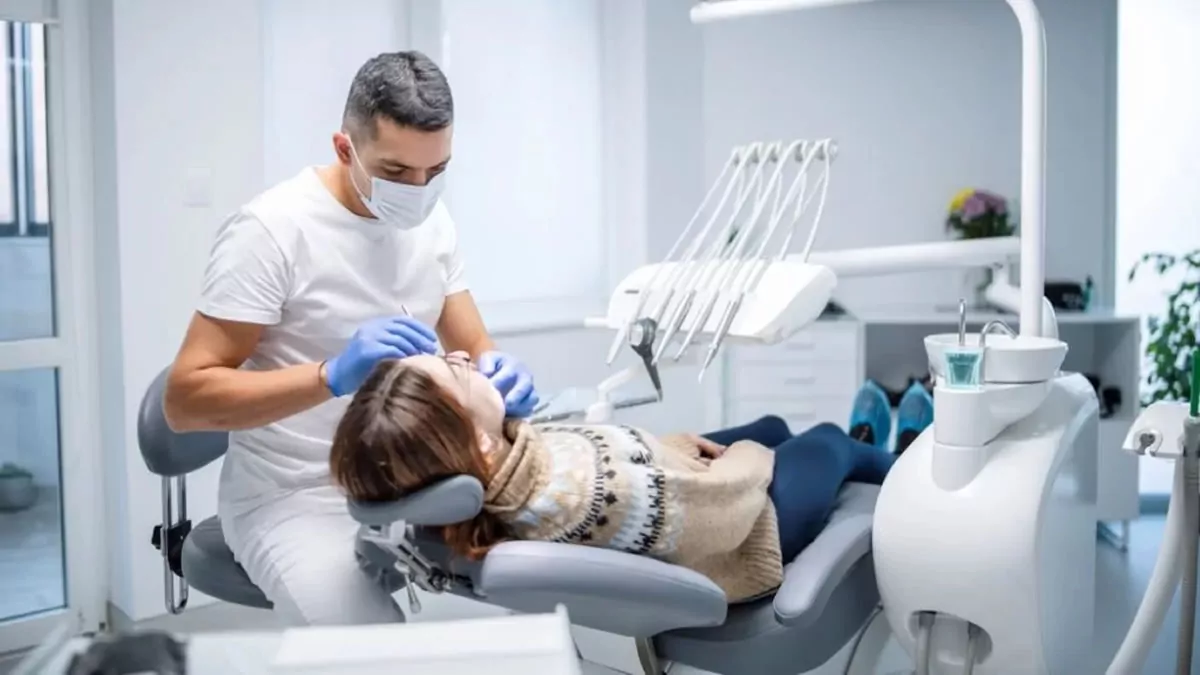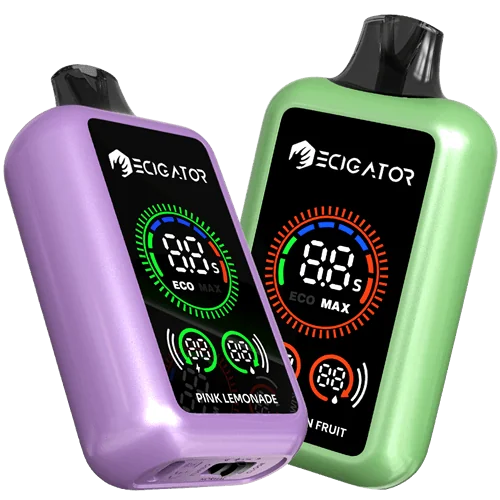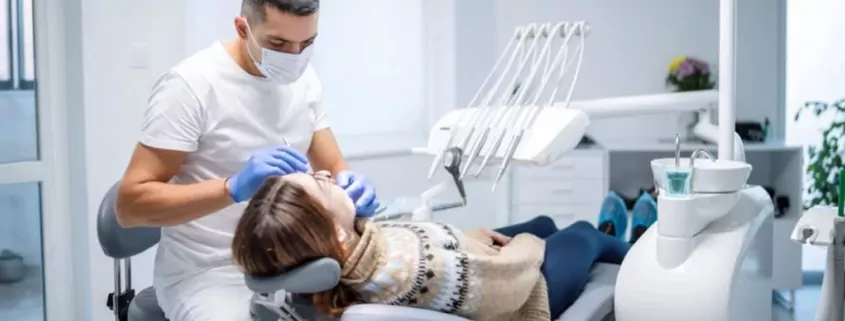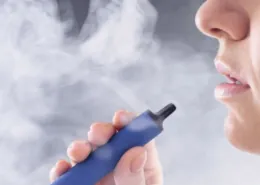Can Dentists Tell If You Vape? Oral Health Signs & Detection
That pre-dental checkup thought: many vapers have had it. “Can my dentist actually tell if I vape?” While you might hope your vaping habit flies under the radar, the reality is that experienced dental professionals are trained to spot a wide array of oral health changes, and vaping, like smoking, can leave its own distinct trail of clues. While a single, isolated puff is unlikely to leave lasting evidence, regular vaping can induce characteristic changes in your mouth that a dentist may indeed notice.
This isn’t about judgment; it’s about understanding how vaping interacts with your oral environment and empowering you to have informed conversations with your dental care provider. Let’s explore the science behind how vaping affects your mouth, what specific signs dentists look for, how this compares to traditional smoking, and what you can do to protect your smile if you choose to vape.
Understanding Vaping’s Interaction with Your Oral Health
Vaping involves inhaling an aerosol produced by heating an e-liquid. These e-liquids typically contain several key ingredients that can directly impact the delicate ecosystem of your mouth:
- Propylene Glycol (PG) and Vegetable Glycerin (VG): These are the base liquids that create the visible vapor. PG, in particular, is hygroscopic, meaning it attracts and absorbs moisture. This property can lead to a common side effect: dry mouth.
- Nicotine: Present in most (but not all) e-liquids, nicotine is a vasoconstrictor, meaning it narrows blood vessels. This can reduce blood flow to your gums, potentially impairing their health and healing capabilities.
- Flavoring Agents: A vast array of chemicals are used to create different vape flavors. While many are food-grade, their effects when heated and inhaled into the oral cavity and lungs are not always fully understood and can vary. Some acidic flavorings, for instance, may contribute to enamel erosion.
- Other Additives and Byproducts: The heating process itself can sometimes produce other compounds, and trace elements from the device might also be present in the aerosol.
These components can lead to a range of oral manifestations that a dentist is trained to observe and assess.
How Dentists Detect Vaping: The Telltale Signs
Dental professionals use a combination of visual examination, patient history, and sometimes more advanced diagnostic observations to build a picture of your oral health. Here are some key indicators they might associate with vaping:
1. Xerostomia (Dry Mouth) and Its Consequences
This is one of the most frequently reported and easily detectable signs. As mentioned, PG in e-liquids draws moisture from the oral mucosa, leading to reduced saliva production. Nicotine can also contribute by affecting salivary gland function and causing systemic dehydration. Dentists might notice:
- A visibly dry appearance of the mouth tissues.
- Reduced salivary pool in the floor of the mouth.
- Increased stickiness or adhesiveness of the oral mucosa.
- A hyperkeratotic (thickened) appearance on the tongue’s surface.
Chronic dry mouth is problematic because saliva is crucial for neutralizing acids, washing away food debris, fighting bacteria, and remineralizing teeth. A lack of saliva significantly increases the risk of tooth decay (especially near the gumline), gum disease, and bad breath (halitosis). Research indicates that the salivary pH in vapers can decrease, creating a more acidic environment conducive to enamel demineralization.1
2. Gum (Periodontal) Health Issues
Vaping can uniquely impact gum health. Nicotine’s vasoconstrictive properties reduce blood flow to the gingival tissues, impairing their ability to receive oxygen and nutrients and hindering their immune response. This can lead to:
- Inflammation and Redness: Gums may appear swollen, red, or tender.
- Increased Bleeding on Probing: While nicotine can sometimes mask bleeding initially due to vasoconstriction, underlying inflammation often leads to increased bleeding when gums are professionally probed. Studies show a higher incidence of bleeding on probing in vapers compared to non-users.2
- Gingival Recession: Localized patterns of gum recession, particularly around anterior (front) teeth, can occur due to direct aerosol exposure and inflammation.
- Altered Microbial Environment: Vaping can shift the balance of bacteria in your mouth. Research indicates increased colonization by certain pathogenic bacteria like Porphyromonas gingivalis and Fusobacterium nucleatum, which are associated with gum disease. PCR-based oral microbiome profiling can even reveal a higher ratio of pathogenic to beneficial bacteria in vapers.3
Histopathological analysis (microscopic examination of tissue) of gingival biopsies from vapers has sometimes revealed thickened basement membranes and disorganized collagen fibers, suggesting chronic irritation.4
3. Tooth Staining and Discoloration
While vape aerosol doesn’t contain the dark tar of cigarette smoke, it’s not entirely innocent when it comes to tooth color. Nicotine itself can contribute to a yellowish-brown discoloration over time as it oxidizes. Furthermore, some coloring agents and additives in certain e-liquid flavors can interact with tooth enamel, leading to staining. This discoloration often appears more diffuse than classic smoker’s stains and may concentrate along the gumline or in areas with plaque buildup.
4. Changes to Oral Tissues (Soft Palate and Mucosa)
Dentists also look for changes in the soft tissues of the mouth:
- “Vaper’s Stomatitis”: Some vapers develop erythematous (red) lesions or localized inflammation on the palate (roof of the mouth), potentially due to prolonged exposure to heated PG and flavorings.
- Leukoplakia or Erythematous Patches: White or red patches on the buccal mucosa (inner cheeks) or other oral tissues can sometimes be observed, particularly with high-nicotine product use. While these are non-specific, they warrant investigation.
- Dry, Cracked Lips: The dehydrating effect of vape aerosol can also extend to the lips, causing them to become dry, chapped, or irritated.
5. Enamel Erosion and Tooth Sensitivity
The chemical composition of some e-liquids, particularly acidic flavorings, can contribute to enamel demineralization and erosion over time. Vegetable glycerin, another e-liquid base, has been suggested to potentially increase enamel porosity. This weakening of the enamel can lead to increased tooth sensitivity to hot, cold, or sweet stimuli. Microhardness testing in research settings has shown vaping-associated enamel softening, and scanning electron microscopy has revealed unique etching patterns on enamel from aerosol droplet impact.5

Will Your Dentist Know If You Only Vaped Once?
If you’ve only vaped once or very occasionally, it’s highly unlikely your dentist will detect any specific, lasting signs directly attributable to that isolated use. Minor, temporary effects like slight mouth dryness or minimal irritation usually resolve quickly and can be caused by many factors. Dentists are looking for patterns of change and cumulative effects that develop with regular, ongoing exposure. A single instance of vaping typically doesn’t create these persistent indicators.
Vaping vs. Traditional Smoking: Differentiating Oral Health Impacts
While both vaping and smoking can negatively affect oral health, dentists often observe distinct differences:
| Parameter | Vaping | Smoking |
|---|---|---|
| Tooth Staining | Yellow-brown, often diffuse | Dark brown, localized tar stains, heavy buildup |
| Gum Appearance | Can be inflamed, red, sometimes with masked bleeding due to vasoconstriction | Often inflamed, but bleeding may be less apparent due to severe vasoconstriction; more pronounced periodontal disease progression over time. |
| Oral Lesions | Erythematous stomatitis (palate), potential for some white/red patches | Higher risk of pronounced leukoplakia, smoker’s melanosis (dark pigmentation) |
| Salivary pH | Tends to be more acidic (e.g., 5.8-6.2) | Can vary, but often less acidic than vapers’ (e.g., 6.5-7.1) unless severe dry mouth. |
| Microbiome | Shifts favoring certain pathogens like Fusobacterium | Shifts favoring other pathogens like Porphyromonas |
| Tar Deposits | Absent | Present, contributing to staining and bad breath |
Molecular analysis of oral cells can even reveal vaping-specific gene expression changes (e.g., related to MMP-9 and TIMP-1) that differ from those seen in smokers, providing potential biomarkers for differentiation.6
Protecting Your Oral Health if You Vape: Proactive Steps
If you choose to vape, taking proactive steps to care for your oral health is essential to minimize potential negative effects:
- Stay Super Hydrated: Combat dry mouth by drinking plenty of water throughout the day. This helps maintain saliva flow and rinse away residues.
- Impeccable Oral Hygiene:
- Brush thoroughly twice a day with fluoride toothpaste.
- Floss daily to remove plaque from between teeth and under the gumline.
- Consider using an antibacterial, alcohol-free mouthwash to help control bacteria and freshen breath.
- Regular Dental Visits: This is non-negotiable. See your dentist and hygienist for regular checkups and professional cleanings (typically every 6 months, or as advised). They can detect early signs of problems, remove hardened plaque (tartar), and provide personalized advice. Some practices even offer advanced screening like ultraviolet light examination for nicotine residues or salivary cotinine testing.7
- Consider E-Liquid Choices: If dry mouth is an issue, you might explore e-liquids with a higher VG (vegetable glycerin) to PG (propylene glycol) ratio, as PG is more drying. Lowering nicotine strength can also reduce its vasoconstrictive and saliva-reducing effects.
- Clean Your Device: Regularly clean your vape device to prevent bacterial buildup that could be introduced into your mouth.
The Importance of Honesty: Talk to Your Dentist
It’s vital to be open and honest with your dental professionals about your vaping habits (and any smoking history). They are not there to judge you; their primary goal is to help you maintain the best possible oral health. Knowing about your vaping allows them to:
- Look for specific early warning signs associated with vaping.
- Provide tailored advice on oral hygiene routines and products best suited for you.
- Offer appropriate preventative treatments (e.g., fluoride applications if enamel erosion is a concern).
- Discuss potential risks and help you make informed decisions about your habits and health.
- If you’re interested in quitting, they can be a valuable resource for cessation support and referrals.
Transparency is key to a collaborative relationship with your dental team.
Ecigator is one of the well-known vape brands spun off from FM Technology Co., Ltd, it’s an ISO-certified disposable vape manufacturer for OEMs, ODMs, and OBM since 2010. The founder team comes from top firms with more than 10 years of experience in the vaping industry and has devoted thousands of hours to providing users with a better and better experience.

18K Disposable Pod Kit
Disposable Pod Kit – 18ml changeable pod with 650mAh rechargeable battery.

20K with Large Screen
20000 Puffs Disposable Vape with large screen. Normal and Boost working modes.

30K DTL Disposable
30K Puffs DTL(Directly to Lung) disposable vape with airflow control and screen.
Conclusion: Your Dentist as Your Oral Health Ally
So, can your dentist tell if you vape? With regular use, the answer is often yes, or at least they may strongly suspect it based on a constellation of clinical signs like persistent dry mouth, specific patterns of gum inflammation, tooth discoloration, or changes in oral tissues. While occasional use is unlikely to leave significant traces, the cumulative impact of vaping can create a recognizable oral health profile.
The most important takeaway isn’t whether your dentist “catches” you, but rather that vaping, while generally considered less harmful than smoking, is not without its own set of potential oral health consequences. By understanding these risks, practicing diligent oral hygiene, staying hydrated, making informed choices about your vaping products, and maintaining open communication with your dental team, you can take active steps to protect your smile and overall well-being on your journey.
References:
- Need another reason not to vape? Your oral health is at risk:https://www.heart.org/en/news/2020/08/26/need-another-reason-not-to-vape-your-oral-health-is-at-risk ↩︎
- Can Dentists Tell You Vape? Dental Signs Revealed: https://www.smilecliniq.com/blog/can-dentists-tell-you-vape-dental-signs-revealed ↩︎
- The oral microbiome: diversity, biogeography and human health: https://www.nature.com/articles/s41579-023-00963-6 ↩︎
- Balwyn Dental on Vaping Effects: https://balwyndentalpractice.com.au/vaping/ ↩︎
- How vaping can damage your teeth: https://www.health.qld.gov.au/newsroom/doh-media-releases/how-vaping-can-damage-your-teeth ↩︎
- Need another reason not to vape? Your oral health is at risk: https://www.heart.org/en/news/2020/08/26/need-another-reason-not-to-vape-your-oral-health-is-at-risk ↩︎
- S5 E05: Vaping & Oral Health: https://www.ada.org/publications/dental-sound-bites/season-5/vaping-and-oral-health-s5e05 ↩︎
- Malaysia Negeri Sembilan Backs Vape Ban, Awaits Clear Laws - August 5, 2025
- Is It Illegal to Vape or Smoke While Driving in Massachusetts? - August 5, 2025
- Austria Plans to Ban Disposable E-Cigarettes - August 5, 2025







